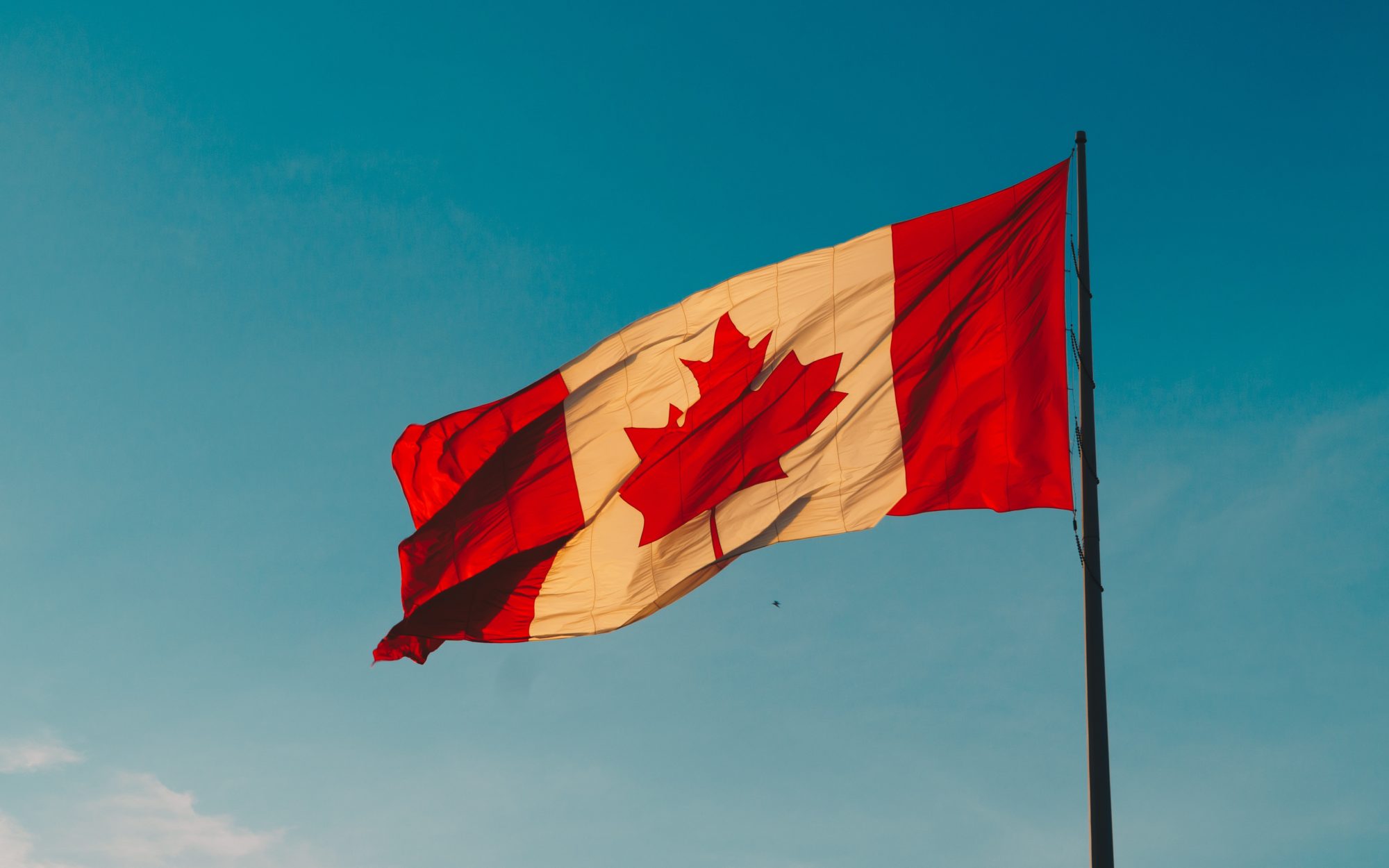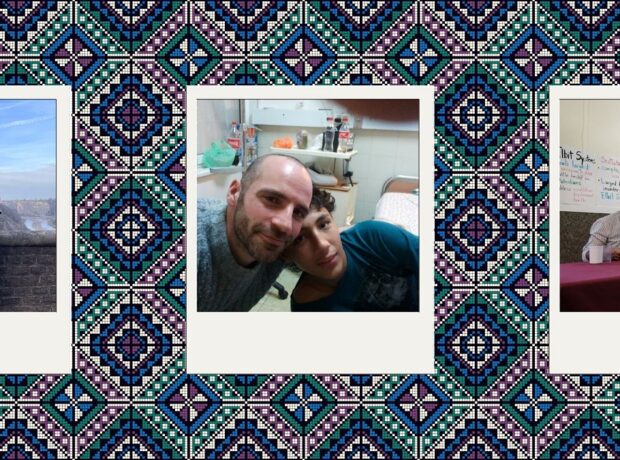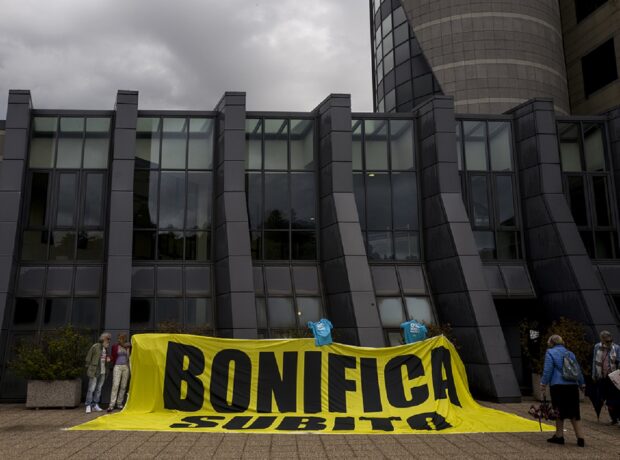In Canada, Jessie Kolvin uncovers a shameful record of missing and murdered Indigenous women and girls. Examining the country’s ingrained racism, she questions whether Justin Trudeau’s government has used the issue for political gain.
In 2017, Canada celebrated its 150th birthday. The country was ablaze with pride: mountain and prairie, metropolis and suburb, were swathed in Canadian flags bearing that distinctive red maple leaf.
My eye was accustomed to the omnipresent crimson, so when I crossed a bridge in Toronto and saw dozens of red ribbons tied to the struts, I assumed they were another symbol of national honour and celebration.
Positive energy imbued even the graffiti at the end of the bridge, which declared that, “Tout est possible”. I reflected that perhaps it really was possible to have a successful democracy that was progressive and inclusive and kind: Canada was living proof.
Then my friend spoke briefly, gravely: “These are a memorial to the missing and murdered Indigenous* women.”
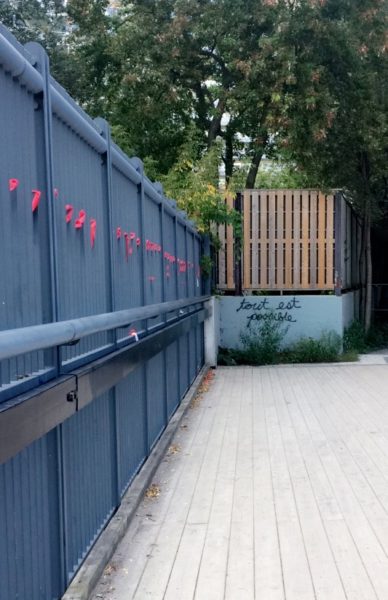
Red ribbons tied to the bridge over Yonge Street in Toronto.
In a moment, my understanding of Canada was revolutionised. I was compelled to learn about the Indigenous women and girls – believed to number around 4,000, although the number continues to rise – whose lives have been violently taken.
No longer did the red of the ribbons represent Canadian pride; suddenly it signified Canadian shame, and Indigenous anger and blood.
At home, I Googled: “missing and murdered Indigenous women”. It returned 416,000 results all peppered with the shorthand “MMIW”, or “MMIWG” to include girls. The existence of the acronym suggested that this was not some limited or niche concern.
It was widespread and, now at least, firmly in the cultural and political consciousness.
The description records that her sister, Jane, has “repeatedly called for a national inquiry into missing and murdered aboriginal women.”
The oldest is 83, the youngest nine months. A random click yields the story of Angela Williams, a mother of three girls, who went missing in 2001 and was found dumped in a ditch beside a rural road in British Columbia.
Another offers Tanya Jane Nepinak, who in 2011 didn’t return home after going to buy a pizza a few blocks away. A man has been charged with second-degree murder in relation to her disappearance, but her body has never been found.
The description records that her sister, Jane, has “repeatedly called for a national inquiry into missing and murdered aboriginal women.”
According to the Royal Canadian Mounted Police, Native American women constitute just 4.3% of the Canadian population but 16% of homicide victims. It isn’t a mystery as to why.
Indigenous peoples are less likely than white Canadians to complete their education, more likely to be jobless, more likely to live in insecure housing, and their health – both physical and mental – is worse.
Alcoholism and drug abuse abound, and Indigenous women are more likely to work in the sex trade. These environments breed vulnerability and violence, and violence tends to be perpetrated against women.

The annual women’s memorial march in Vancouver continues to honour the lives of missing and murdered women and girls – by Kenny McDonald.
Amnesty International has stated that Indigenous women in particular tend to be targeted because the “police in Canada have often failed to provide Indigenous women with an adequate standard of protection”.
When police do intervene in Indigenous communities, they are often at best ineffectual and at worst abusive. Indigenous women are not, it appears, guaranteed their “right to life, liberty and security of the person” enshrined in the Canadian Charter of Rights and Freedoms.
It didn’t take me long to realise that many of these problems – Indigenous women’s vulnerability, the violence perpetrated against them, the failure to achieve posthumous justice – can be partly blamed on the persistence of racism.
Successive governments have failed to implement substantial change. Then Prime Minister Stephen Harper merely voiced what had previously been tacit when he said in 2014 that the call for an inquiry “isn’t really high on our radar”.
If this is believable of Harper, it is much less so of his successor Justin Trudeau. With his fresh face and progressive policies, I had heralded his arrival. Many Native Americans shared my optimism.
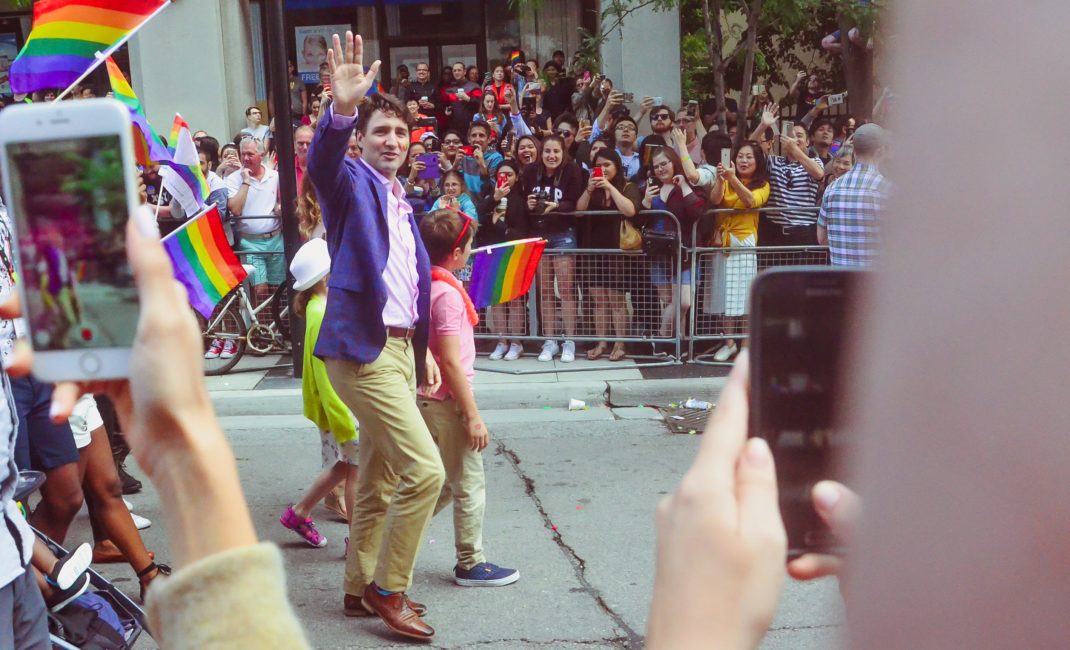
Canadian Prime Minister Justin Trudeau by Joy Real.
For Trudeau certainly talked the talk: just after achieving office, he told the Assembly of First Nations that: “It is time for a renewed, nation-to-nation relationship with First Nations peoples, one that understands that the constitutionally guaranteed rights of First Nations in Canada are not an inconvenience but rather a sacred obligation.”
Trudeau committed to setting up a national public inquiry which would find the truth about why so many Indigenous women go missing and are murdered, and which would honour them.
Read more: A four-month, 2,000-mile journey across Alaska and Canada
Launched in September 2016, the National Inquiry into Missing and Murdered Indigenous Women and Girls was given a budget of $53 million and a deadline of November 2018.
I felt vindicated; Trudeau had not let me down. The inquiry would defend Indigenous women’s rights and achieve justice for the victims and their families.
Indigenous responses echoed my hopefulness. Dawn Lavell-Harvard of the Native Women’s Association of Canada is quoted in The Guardian: “This is a historic moment that we are now beginning to start the work… we have arrived at a new beginning.”
The same article quotes Denise Maloney Pictou, whose mother was killed in 1976: “We’re hopeful. We have faith… All our family wants is the acknowledgement that our family members matter, that they had value, because they certainly had value in our families’ lives.”

Justin Trudeau addresses a “Sisters in Spirit” vigil for Missing and Murdered Indigenous Women and Girls in 2017 – by Obert Madondo.
Alongside the optimism, however, I found words of caution and unease about the inquiry’s mandate and effectiveness.
Closed cases would not be reopened; neither the justice system, nor police conduct and practice, would be scrutinised; no Inuit commissioner had been appointed.
The inquiry didn’t satisfy everybody, but I reassured myself that at least something was being done. Something was better than nothing.
In order to better understand what the inquiry was doing, instead of not doing, I visited its official website.
The information it gives is brief. The three objectives of the Commission (the board of people entrusted with carrying out the inquiry) are:
- “Finding the truth
- Honouring the truth
- Giving life to the truth as a path to healing.”
Their commitment to “the truth” struck me as vague.
What truth are they seeking? The truth of these women’s stories? The truth about how their cases have been managed? The truth about relations between Indigenous and non-Indigenous communities?
The website (which has since been upgraded) left me unclear but at least, I thought, they are acknowledging the need to be honest and transparent.
The About Us page offered a different focus. “The Commissioners’ mandate is to examine and report on the systemic causes of all forms of violence against Indigenous women and girls in Canada by looking at patterns and underlying factors.”
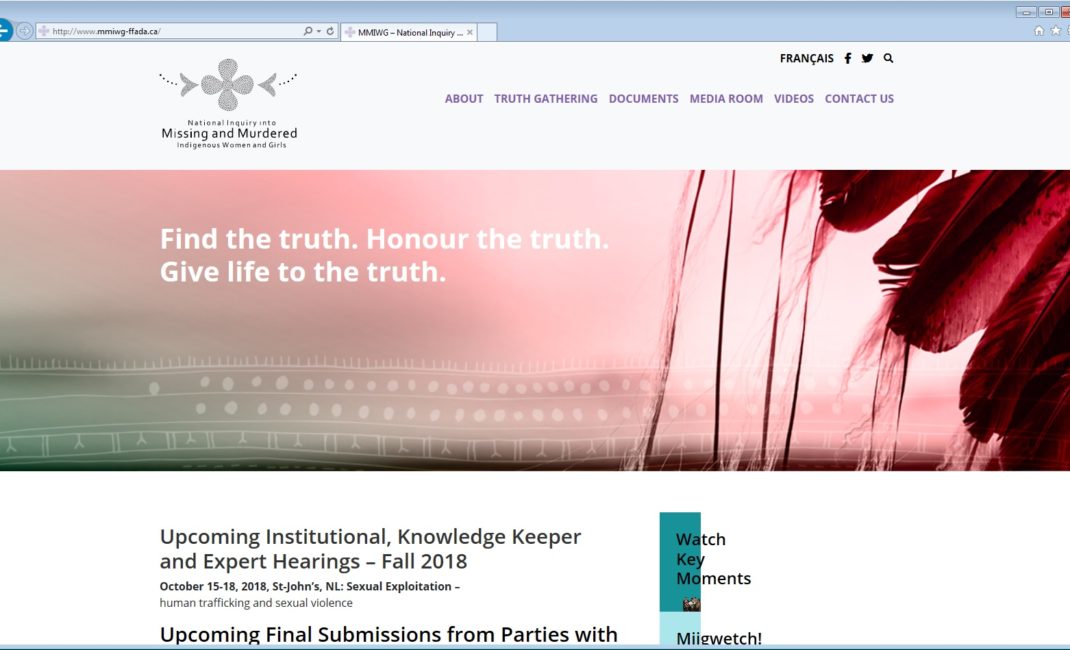
The homepage of the upgraded website of the National Inquiry into Missing and Murdered Indigenous Women and Girls.
This seems to align with “finding the truth”, but its relation to honouring and giving life to “the truth” is unclear.
I decided to trust them anyway. They appear to understand the double-edged nature of this issue: there are severe political and sociological problems that need to be addressed, but the Commission also needs to acknowledge the ongoing suffering of victims’ families.
Delving into the Canadian media, however, a more worrying picture emerged.
To start with, the inquiry was under resourced. Staff were expected to use out-of-date computers and mobile phones. Offices across provinces and time zones did not have a shared network, which in the 21st century seems an almost farcical failing.
The first few months of the inquiry’s invaluable time were slowed down and distracted by simple logistical matters. The focus was not on the victims and their families.
Then I discovered that I was not alone in being confused by the Commission’s website.
Journalist after journalist, and victim after victim, express their frustration across Canadian media at the silence emanating from the inquiry.
I can’t piece together exactly what the Commission is doing, but I can piece together that no one else really knows either.
A report card made by the Native Women’s Association of Canada (NWAC) for the period May 2017 to March 2018 is unequivocal in its judgement of the inquiry’s communication.
“The Commission’s overall responsibility to develop and adhere to Communication that provides information, transparency and accountability” is given a straight fail.
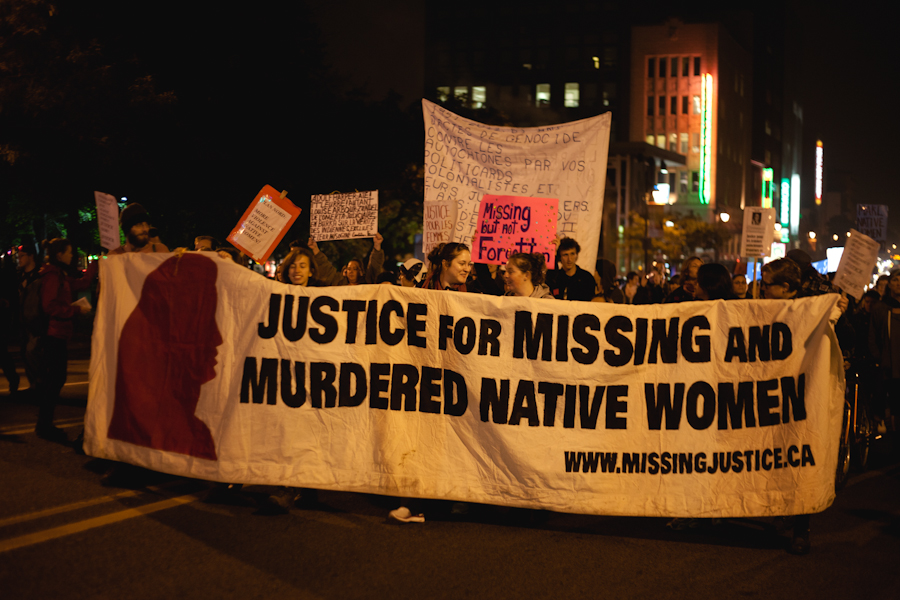
Protesters at the Sisters in Spirit Memorial March – by Thien.
It took four months after the inquiry officially began for the website I saw even to be produced, and four months for a Director of Communications to be appointed.
Reportedly, the commissioners were given no communication training. Instead, the legal team has a say in everything that goes out to the public. Their official line is that nobody should talk to journalists (who are largely sympathetic).
According to the NWAC, any official statement is written in complicated language, difficult to understand even if English is your first language.
Delays are not explained. So scared is the Commission of saying something wrong that it says nothing at all. Even its budgetary breakdown is not public. The inquiry is, to a layperson, impenetrable.
This lack of transparency began to erode my trust in the inquiry. But I am merely an interested observer. Surely the victims’ families, the people whose grief and uncertainty this inquiry was formed to relieve, had all the information they needed?
But every news story and Indigenous website that I read suggests otherwise.
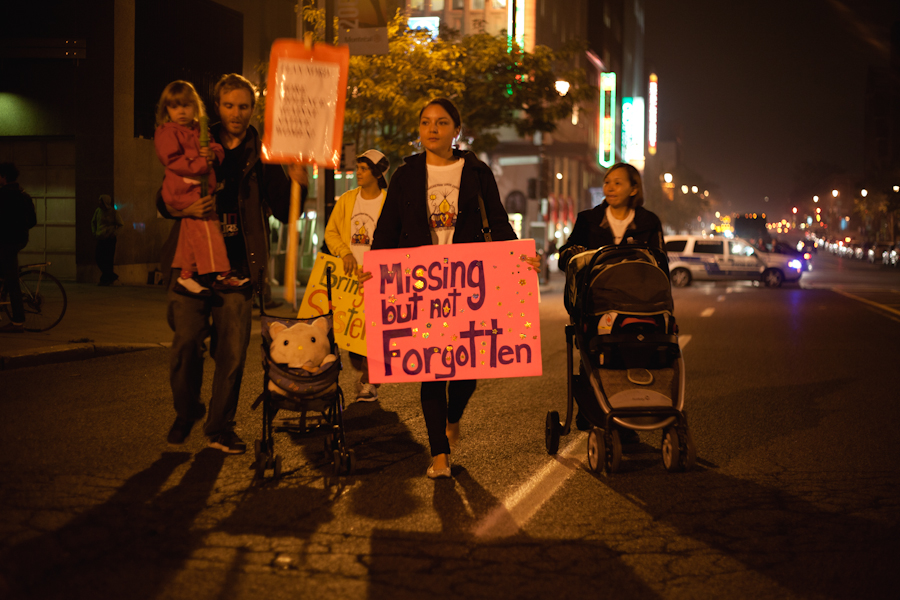
Families take to the streets in the annual “Sisters in Spirit” march and vigil – by Thien.
By all accounts, the families, who are central to this inquiry, are just as baffled as I am. The Commission is notoriously difficult to get in touch with. Two phone numbers and one email address are provided on the Commission’s website.
To register to speak at one of the inquiry’s hearings taking place across the country, a family must leave a voicemail or send an email. According to dozens of people, they have not received replies.
The many Indigenous communities in isolated areas without a phone line or internet do not even have that option.
Nor do the Indigenous incarcerated or homeless, whose voices Indigenous leaders have repeatedly called to be included in the inquiry.
Some families have been successful at getting in contact, but even then are facing barriers. Some are given permission to speak at a hearing, then are cancelled without explanation. Others are cut off in the middle of their testimony, given less time to speak than they had been led to believe.
Some don’t even get the chance to speak, either because their story has been deemed inappropriate for the occasion, or because they didn’t know the hearings were happening.

Families take to the streets in the annual “Sisters in Spirit” march and vigil – by Thien.
Black humour surfaces on the internet about Indigenous families’ trauma – trauma arising from trying to contact the Commission.
Rather than providing support for already distressed families, the Commission is obstructing their participation, disappointing their raised hopes. Now my sympathy vanishes.
In its most basic job – hearing the testimony of victims’ families across Canada – the inquiry is failing.
I am not alone in my frustration. Staff turnover in the Commission has been high. In June 2017, four senior staff members resigned: the Executive Director, the Director of Operations, the Director of Communications and the Manager of Community Relations.
The most high-profile resignation was Marilyn Poitras, one of the five inquiry commissioners, in July 2017. She said in a CBC interview that the inquiry was going down a “tried road”, following a “status quo, colonial model”.
She, alongside Indigenous leaders and victims, wanted the Commission to be community-driven: Indigenous women needed a format in which their voices would be heard, acknowledged, acted upon.
Instead, said Poitras, “this model… has legal counsel driving it”.
In its chaos, the inquiry has forgotten to prioritise the voices of the victims’ families and Indigenous leaders, the voices which will lead them to “the truth”.
Poitras also identifies the very thing that I found confusing on my first visit to the inquiry website.
What exactly is the inquiry’s mission? If it is to “find the roots of systemic violence”, then Poitras asks: “Were we getting that information [at hearings]? Is that what that line of questioning is designed to do?”
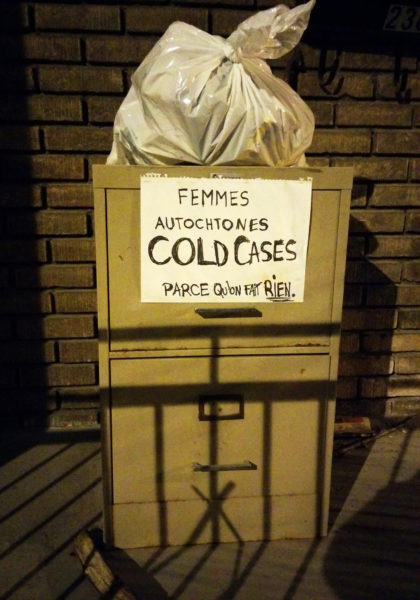
The translation of this sign on a filing cabinet in Rue Davidson, Montréal: “Indigenous women cold cases. Because we do nothing” – by Coastal Elite.
She adds: “We were disagreeing on — for example — the rollout of the hearing schedule.”
All of which suggests that, whilst the individual commissioners wish the inquiry to succeed – not least because they are all Indigenous – they have failed to settle on a unified goal or approach.
Ultimately, that means “it’s not going to get at the roots of systemic violence.”
Poitras is unequivocal: “I don’t know how it’s going to do that.”
I try to imagine what it must feel like to hear that as an Indigenous woman.
I remained puzzled by one thing: many of the inquiry’s recurrent failings seemed easily resolvable, if it just had more time. For something so important, why had the government imposed a two-year deadline on the inquiry in the first place?
Recent commissions (such as the Truth and Reconciliation Commission of 2008, charged with examining the damning legacy of Canada’s Residential Schools for Indigenous children), were given five years to complete their work or no deadline at all (in the case of the Gomery Inquiry of 2004, which investigated a sponsorship scandal in the Liberal Party).
So why the short timeframe here? With more time, and lower expectations, perhaps the Commission could have done better work.
So I ask my Canadian family, out of context, whether there are any upcoming elections.
Indeed, there are: a series of provincial and municipal elections over autumn 2018, and then in 2019, the big one – the next federal election.
Of everything I learned, this made me the coldest.
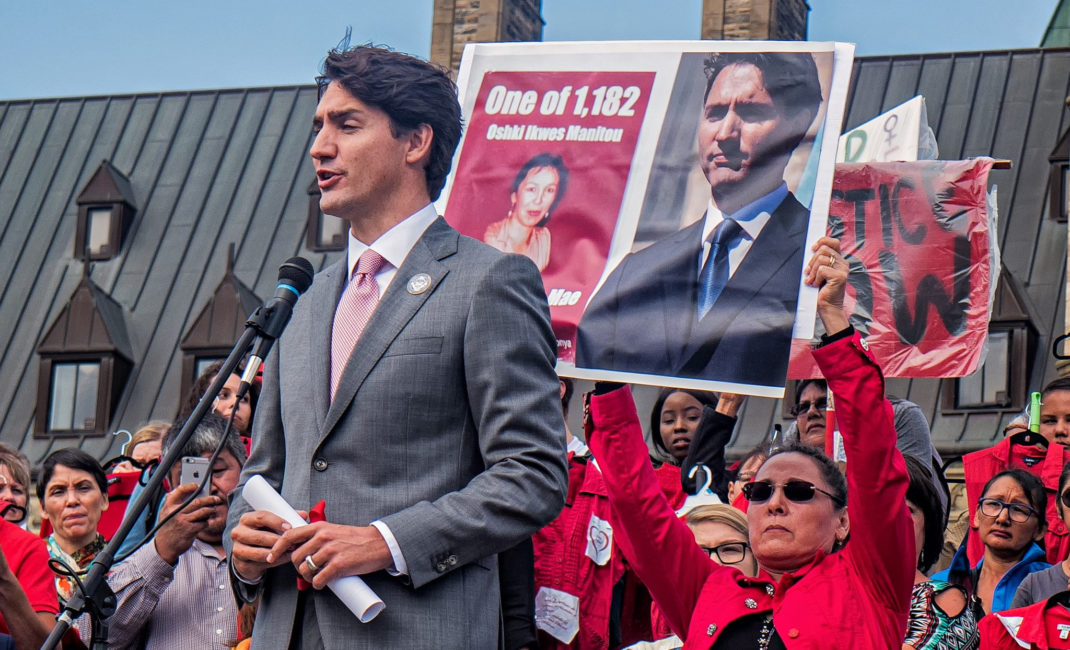
Behind Justin Trudeau, Maggie Cynwink holds up an image of her sister, Sonya Nadine Mae Cynwink, one of 1,182 recently missing or murdered Indigenous women and girls – by Obert Madondo.
Did the Liberals, did Justin Trudeau, actually care about finding the truth about these thousands of victims; about granting them justice; about giving their families the chance to share their stories; about identifying the factors that have caused these atrocities, and committing the time and money and people to ensure it stops for good?
Or did they just care about saying the right things when it came to Indigenous rights, in order to be elected and re-elected?
Were the violent ends to thousands of women’s lives being used for political gain?
Apparently, to those who follow these issues, it was evident from the beginning that Trudeau’s promises were unachievable.
They knew that the inquiry could never realise its ambitions with the time and resources it was given. But Trudeau’s charming ways, his refreshing soundbites, had successfully won me over; I had believed in his equal Canada.
Read more: Rape survivors reframe their stories with dramatic art exhibition
Even my discovery of the inquiry had fit into that vision: Trudeau was doing something to which no previous Canadian politician would commit.
For this he still deserves credit. But after everything I’ve learnt, I cannot escape cynicism.
While the Commission remains dysfunctional, the real issue – the injustice against Indigenous women – will be obfuscated.
As long as the Commission fails in its brief to “examine and report on the systemic causes of all forms of violence against Indigenous women and girls in Canada by looking at patterns and underlying factors”, Indigenous women will continue to be vulnerable, denied their right to “right to life, liberty and security of the person”.
The inquiry continues. The Commission, to mixed support, asked the government for a two-year extension in order “to do justice to our critically important mandate.”
The government took three months to reply, during which time the fate of the inquiry, and by extension the justice due to the missing and murdered women, and the safety of Indigenous women, remained uncertain.
In early June, the government announced that it would grant the inquiry an extra six months: the new deadline is April 30th 2019.
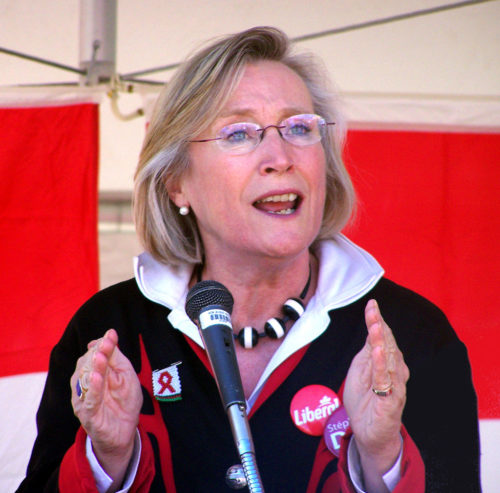
Minister of Crown-Indigenous Relations, Carolyn Bennet.
Explaining the government’s decision, the Minister of Crown-Indigenous Relations, Carolyn Bennet (right), said that they lacked the unanimous support from the provinces necessary to extend the process.
She also made explicit that which I’d hoped not to be true: the Liberal administration sought a final report before the 2019 federal election.
Those who will suffer are, once again, the most vulnerable.
Commissioner Qajaq Robinson commented that: “The timeline severely limits the capacity of the National Inquiry to adequately engage those who have been marginalized due to incarceration, homelessness, or human trafficking, and those who are currently living in violent circumstances.”
Commissioner Marion Buller merely stated the obvious: “We believe political expediency has been placed before the safety of Indigenous women, girls and 2SLGBTQ people.”
I have never before read the findings of an inquiry.
I imagine it is an arduous task. But when the findings of this inquiry are published, I shall take the time to understand it as best I can.
I can no longer be naive about Canada. As long as red ribbons adorn trees and bridges across that nation, Indigenous women are being failed.
But not irrevocably. It is possible to root out this wrong, to make it a thing of the past and to grant justice to those who have already lost their lives.
After all, “Tout est possible”. When every red ribbon can be taken down, when red can once again be the colour of Canadian pride, when the rights of all Canadians are protected and enforced, Canada will have something to celebrate.
*In this article the term “Indigenous” is used to reference collectively First Nations, Inuit and Métis Peoples.
Main image by Hermes Rivera.
- For stories like these direct to your inbox, subscribe to our monthly email here.
